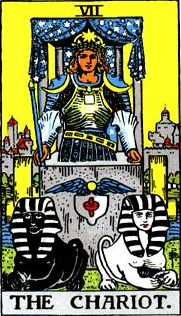
Whenever I look at key VII, I can hear Rod Stewart’s voice rasping, “Every picture tells a story, don’t it?” This picture definitely tells a story, if you pay attention to what’s actually there and read all the symbols. First, look at the chariot on the tarot card, and then compare it to the chariots pictured in the previous blog. The tarot card chariot would seem to be useless. It has wheels, but they won’t work because the body of the chariot is resting on the ground and is made of what looks like a block of stone. The two
 sphinxes that are supposed to be pulling it look as unlikely to be up to the job as Freya’s cats. They are lolling serenely in front of the chariot, playing with their tails. One is black and the other is white, which suggest that one has a yin temperament and the other is yang—not an ideal pairing for two steeds that are supposed to pull together. They aren’t even harnessed to each other or to the chariot, and the charioteer has no reins to guide them.
sphinxes that are supposed to be pulling it look as unlikely to be up to the job as Freya’s cats. They are lolling serenely in front of the chariot, playing with their tails. One is black and the other is white, which suggest that one has a yin temperament and the other is yang—not an ideal pairing for two steeds that are supposed to pull together. They aren’t even harnessed to each other or to the chariot, and the charioteer has no reins to guide them.
This vehicle is doomed to failure, and yet the meaning of key VII is victory, success. Clearly, the driver must have another way of making the chariot move.
To completely understand the symbolism that explains this other way, we need to look back at the previous keys.
Some readers find it useful to arrange the major arcana in three rows of seven, with The Fool, 0, or spirit above them. The layout looks like this:
O
1 2 3 4 5 6 7
8 9 10 11 12 13 14
15 16 17 18 19 20 21
Paul Foster Case, in The Tarot, A Key to the Wisdom of the Ages, suggests that the top row, keys 1 – 7, describe “powers or potencies”, and keys 8 – 14 describe “laws” and forces at work within us and around us. The last row describes “conditions” overcome or “effects” caused by the first two rows.
The Chariot is the final key in the “powers and potencies” row. The first six cards are pairs of opposites that complete each other.
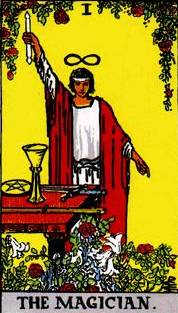
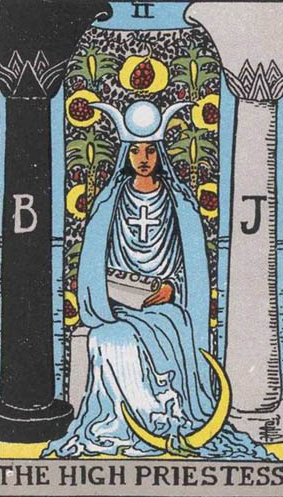
The yang Will of The Magician, combined the yin of The High priestess’s innate knowledge make a well balanced practitioner of the magical arts.
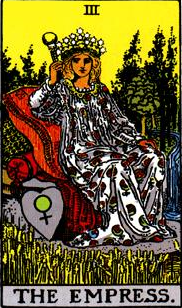
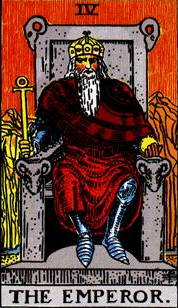
The bounty and abundance of The Empress combined with the control, discipline, and farsightedness of The Emperor makes for a successful kingdom or household.
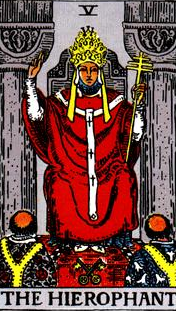
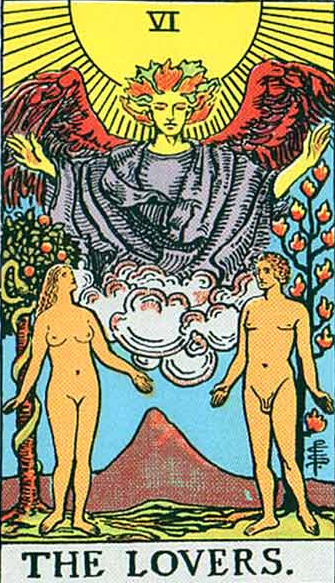 The Heirophant card is about the word of God as voiced by the leaders of earthly religions. This, combined with The Lovers, which is about choices inspired by out higher selves, serves to keep us on the path to spiritual enlightenment.
The Heirophant card is about the word of God as voiced by the leaders of earthly religions. This, combined with The Lovers, which is about choices inspired by out higher selves, serves to keep us on the path to spiritual enlightenment.
The Chariot is the symbolic shorthand for all of the previous pairs. To make this ever so obvious, the picture echoes all of the first six cards. The ![]() houses (Beth) and windows (Heh) of the city remind us of The Magician and The Emperor. The chariot itself is shaped like The Magician’s altar and the High Priestess’s throne. The river that runs from the High Priestess’s cloak flows behind the chariot and the black and white sphinxes remind us of the black and white pillars behind her. The park-like area behind the chariot is like the Empress’s garden. The charioteer and the two sphinxes in front of him echo the tableaus of both Hierophant and The Lovers, the yin-yang of the human psyche listening to either his/her higher self or the voice of God.
houses (Beth) and windows (Heh) of the city remind us of The Magician and The Emperor. The chariot itself is shaped like The Magician’s altar and the High Priestess’s throne. The river that runs from the High Priestess’s cloak flows behind the chariot and the black and white sphinxes remind us of the black and white pillars behind her. The park-like area behind the chariot is like the Empress’s garden. The charioteer and the two sphinxes in front of him echo the tableaus of both Hierophant and The Lovers, the yin-yang of the human psyche listening to either his/her higher self or the voice of God.
The card is also loaded with union-of-opposites symbols:
*The yin-yang duality of the sphinxes
*The chariot body representing the earth and wisdom, surmounted by a canopy representing the starry heavens of divine inspiration
*The red lingam-yoni, typifying life force, the union of positive and negative energies![]()
*The golden disk of self consciousness (The Magician) born aloft by the intuitive wings of The High Priestess, symbolizing aspiration
![]()
*The waxing and waning moons on the charioteer’s shoulders
*The solar-lunar symbolism of the star on his crown and the moons
*The lingam-yoni symbolism of the chariot wheels and their axles
![]() The way the charioteer drives his chariot is by harnessing the dualities of the first three pairs of keys, positive to negative, yin to yang, feminine to masculine, earthly to divine, into potent action, and directing it outward with his scepter.
The way the charioteer drives his chariot is by harnessing the dualities of the first three pairs of keys, positive to negative, yin to yang, feminine to masculine, earthly to divine, into potent action, and directing it outward with his scepter.
The Chariot teaches the value of wholeness. Once we create wholeness within ourselves by recognizing and integrating the conflicting parts of our psyches and then link our psyches to the divine (the goal of most spiritual practices), anything is possible and we are victorious.
To be continued….

